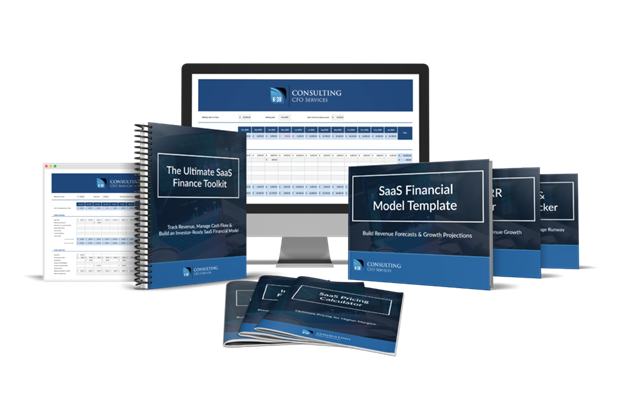
Launching and scaling a SaaS (Software as a Service) startup requires more than a great product idea. Founders must be able to understand their growth metrics, manage cash flow, and plan realistic financial projections. In most cases, this becomes challenging because SaaS business models are subscription-driven and depend on customer retention, recurring revenue, acquisition costs, and long-term value. Without proper financial forecasting, many SaaS startups struggle to balance expenses and funding, eventually running into cash flow issues.
That’s why using a carefully designed SaaS financial model template can provide a foundational framework to track performance and scale the business systematically. This type of model simplifies complex financial data and provides founders with clarity on profitability, revenue potential, and operational planning. When created properly, it can help convince investors, optimize decision-making, and guide sustainable growth.
Why Financial Modeling Matters for SaaS Companies
Unlike traditional businesses that generate revenue at the point of sale, SaaS companies rely on recurring monthly or annual subscriptions. This means revenue builds gradually and depends heavily on customer retention. Key performance indicators such as MRR (Monthly Recurring Revenue), ARR (Annual Recurring Revenue), CAC (Customer Acquisition Cost), and LTV (Lifetime Value of a Customer) become essential decision-making metrics.
A strong financial model helps SaaS founders:
- Track recurring revenue trends and see how different pricing strategies impact revenue.
- Predict runway and cash burn, ensuring the company does not run out of funds unexpectedly.
- Plan hiring and operational scaling, based on realistic revenue growth.
- Present clear financial projections to investors.
Without a structured financial model, SaaS companies often misjudge their cost structure, especially sales and marketing costs associated with customer acquisition.
The Importance of Tracking Key SaaS Metrics
To scale efficiently, SaaS founders need to monitor:
| Metric | Meaning | Why It’s Important |
|---|---|---|
| MRR | Monthly recurring revenue | Determines growth rate and baseline revenue stability |
| CAC | Customer acquisition cost | Measures marketing efficiency |
| LTV | Lifetime value | Shows total revenue generated per customer |
| Churn Rate | % of customers lost over time | Impacts revenue sustainability |
| Gross Margin | Revenue minus cost of service | Determines profitability |
A high LTV-to-CAC ratio (ideally 3:1 or more) indicates strong business health. However, many early-stage SaaS companies struggle because CAC becomes too high compared to LTV, making scaling expensive. A financial model makes these gaps visible early and helps adjust strategy.
How Outsourced CFO Services Can Help SaaS Startups Grow
Many startups cannot afford a full-time Chief Financial Officer in the initial stages. This is where outsourced CFO services, like those provided by K-38 Consulting, LLC, become extremely valuable. Instead of hiring a costly internal finance team, startups can access expert-level guidance at a fraction of the cost.
Benefits of outsourced CFO support include:
- Accurate forecasting and budgeting
- Cash flow optimization
- Fundraising strategy and investor-ready financial statements
- Guidance on pricing and revenue modeling
- Scenario planning for growth and market shifts
This allows founders to focus on product development and customer acquisition while maintaining financial discipline.
Financial Modeling for Fundraising and Investor Confidence
Investors evaluate SaaS startups largely based on future potential rather than current revenue. A detailed financial model shows:
- Revenue projections over 12–36 months
- Expected growth rate based on market conditions
- Operational scaling plans and hiring roadmap
- Path to profitability
When founders present structured financial projections, investors can clearly understand how funds will be used and how quickly the business is expected to grow. A strong financial model builds credibility and increases the likelihood of securing funding.
Long-Term Scalability and Strategic Planning
A SaaS company may start small, but scaling requires planning. Whether expanding into new markets, introducing new pricing tiers, or increasing marketing efforts, each decision affects revenue and expenses. A financial model evaluates these decisions using scenario analysis, enabling founders to choose the most profitable growth strategy.
Without such guidance, businesses often scale too quickly or too slowly — both of which can limit long-term success.
Final Thoughts
Financial modeling is not just about numbers; it is a strategic roadmap for building a sustainable SaaS company. By understanding recurring revenue trends, acquisition costs, and long-term customer value, founders can make informed decisions that support stable growth.
Using a structured SaaS financial model template provides clarity, reduces guesswork, and helps ensure that every strategic move aligns with long-term business goals. Whether you are preparing for fundraising, scaling operations, or optimizing your pricing model, having the right financial structure in place is essential for success.
